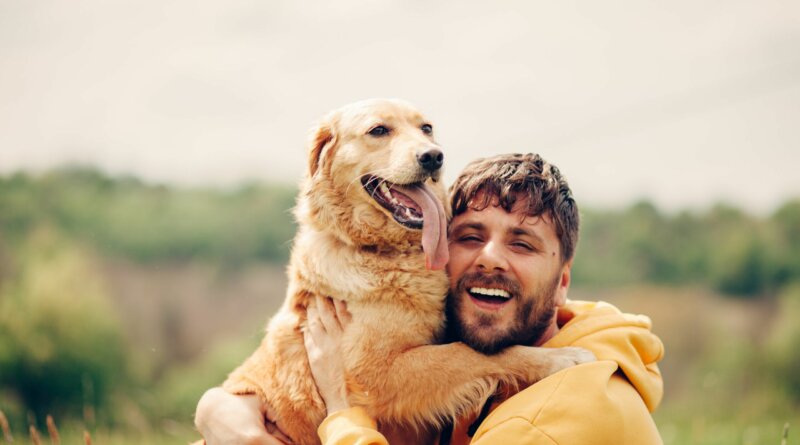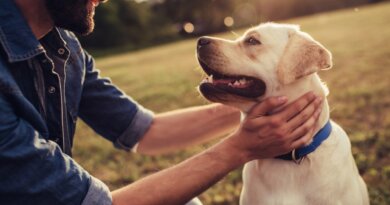How To Build Trust With Your Dog – Dogster
In order to build trust with your dog, you must be trustworthy. What does this mean? It means you are consistent and therefore predictable. You are kind and understand that dogs have emotions and express them through behavior. You are aware of your own emotions and behavior while interacting with your dog. Looking to build trust with your own dog? Want to show her you have her back? Follow these seven steps.
7 ways to build trust with your dog
- Learn dog body language. Observation is key to learning how to read dog body language, and this helps you understand them better. Noticing an atypical or unfamiliar behavior in your dog is a cue that your dog is trying to tell you something. Are they in pain, feel fearful, anxious about something in their immediate environment, confused by what you’re asking?
Instead of getting frustrated, ask yourself what’s going. Why is she acting this way? When you stop and ask questions, you are better equipped to help your dog either by managing the environment — going to a veterinarian or stopping play with another dog — who may be causing this behavior. By doing this, you show your dog that you have her back.
Learning dog body language is required to accurately interpret their behavior. This safeguards dog welfare and helps to minimize development of anxiety-related behavioral issues.
- Be consistent. Being consistent offers a dog predictability, which fosters trust. Routine is one way to be consistent. I don’t mean same time, same place. I do mean training, feeding, play and walks happen daily, but not necessarily at an exact time. When your dog can depend on you to care for them physically, mentally and emotionally, it helps them to feel safe.
Make sure your interactions with your dog are consistent in the manner of how you approach them, talk to them, teach them, play with them, etc. Again, this offers them a sense of safety and security. They can trust you to be compassionate and kind in your interactions, so they don’t have to be worried or surprised that you may yell at them, forget to feed them or put them in a situation that may cause them anxiety.
- Raise your awareness. Have you ever asked your dog to do something and had her stop and look at you instead? Some people may think the dog is being defiant, but let’s look at this through a different lens.
You have just had a lovely time playing with your dog, but then realize you are late for an appointment. You tell your dog “Come” in a hurried way, and she doesn’t. She just looks at you. Normally, your dog comes right along with you. But this time, she freezes.
If you get mad because she didn’t respond to your abrupt way of being, you break her trust. If, instead, you are aware of who you’re being (a person irritated and, in a hurry), you will see that she is confused with the abruptness of your tone when stopping play.
Seeing a situation through your dog’s perspective helps you realize who you’re being. Take a minute to gather yourself:
- lower your energy
- soften your tone
- relax your body language
This alone lets your dog know all is well, and she’ll happily come along with you. Don’t underestimate a dog’s innate ability to pay attention to your every move.
- Use positive reinforcement. We have come a long way in understanding dogs and the ethology of dogs. We know that their behaviors are a manifestation of their emotions. With this understanding, we know that punishment isn’t the way to help them with their emotions. The science is there.
Punishment doesn’t offer relief. It only makes a dog shut down. With punishment, she quickly learns you aren’t trustworthy, because you didn’t help her feel safe. You punished her, instead.
Offering safety, because you understand she is expressing some kind of emotion, tells her you are trying to understand that she is experiencing some anxiety, and you have her back.
- Focus on providing safety and security. Creating a safe environment inside and outside the home happens when you understand each dog is an individual, with her own feelings and needs, and you do your best to meet those needs.
I often see pet parents living with multiple dogs and lumping them all into everything they do. They fail to realize that one dog may not feel safe walking with another dog, eating too close to the other dogs, being left alone in the same room with all the dogs, prefers to stay home rather than go on outings, etc. Being aware of the individual needs of dogs goes a long way to building trust.
- Be patient. Dogs are not robots, and not all dogs want or need what you think is important. Whether you are training, playing or walking, be aware of your own level of patience or lack thereof.
You are your dog’s whole world, and she looks forward to being with you, interacting with you and learning together. If you have an agenda, you are not thinking about her — her desires and needs in the moment. This can easily deplete your trust account.
Having patience means allowing your dog to process not only her environment but also what you are asking of her. Don’t rush. Give your dog a chance to participate or not, at her pace. Consent is critical in all aspects of being with dogs.
- Give your dog agency. Offering agency gives dogs a sense of freedom to choose. Given that everything they do — going potty, eating, sleeping, exercising, playing, learning, etc. — happens on our terms, allow them choice/agency to participate or not.
You can only know your dogs’ wishes if you pay attention to what they’re saying, allow them to feel their emotions and process their emotions. This gives them the opportunity to develop healthy coping skills, because they feel safe in the moment. When a dog feels they have an exit or a way out of any situation, they feel safer. Feeling safer builds trust.
Understanding trust and your dog
The foundation of our relationship with dogs begins with their trust that we will provide a safe and secure environment. Barking Brains owner, Dr. Kathy Murphy, puts it this way, “Essentially trust is a prediction. I trust you to have my back = I predict you will always have my back. Trust is essential for social species, otherwise we waste so much brain energy preparing to deal with all the possible outcomes on our own.” And she should know, Dr. Murphy is a neuroscientist who specializes in brain development in respect to behaviors and the success (or lack thereof) of training methods in different life stages.
We often only think of trust when it comes to how to get a scared, abused or traumatized dog to trust you, but that’s only one obvious aspect of the concept of trust. Trust is established when the dog feels safe to be a dog, do what dogs do, when they can communicate, feel understood and heard.
When we know how to read dog body language we can see when a dog is stressed, frightened, shut down or overexcited. Only then can we help them by offering safety and security, in the moment. We can do this by allowing them to process their emotions while accepting their behavior as an expression of emotion and then, offer them relief.
Andrew Hale, certified dog behaviorist in the UK, has brought so much to the dog community with his continued conversation about dog-centered care, an approach that shines a light on the emotions of dogs and how we can help them. He says trust cannot be bought, forced or artificially created. It is an organic process that builds, and does so quickly when one feels safe.
Building trust in our dogs is not a simple task. It’s our responsibility to take it seriously. When we affirm that dogs are our best friends, we must allow them to be vulnerable, therefore feel safe with us, thereby setting a solid foundation of trust. Nothing compares to the deeply shared gazes we experience with our dogs when we offer them the safety and security to “be a dog.”




